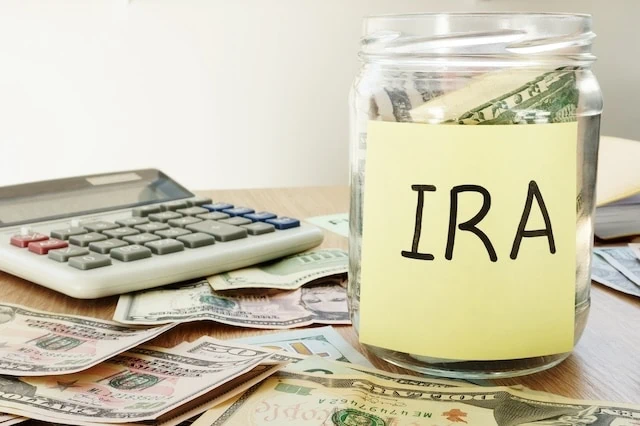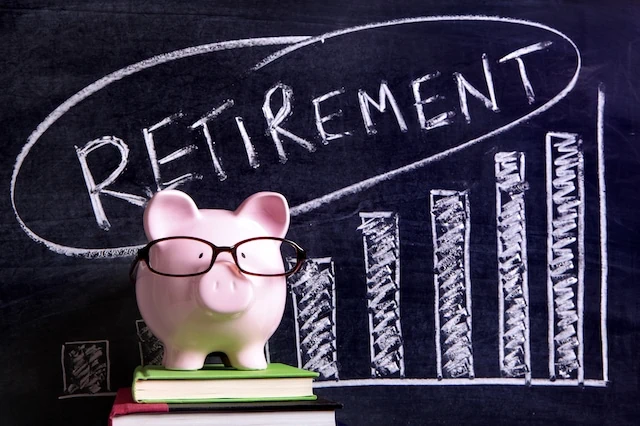When you enter the workforce, the concept of retirement barely feels real. It’s simply a finish line hundreds of miles away that you can hardly see, let alone touch.
But as you get closer to that finish line, that goal—and how prepared you are to reach it in good shape—starts to come into focus. Part of that focus is a more concrete idea of how much money you’ll actually need to retire well, and whether you’re on track to hit that number.
Although everyone’s financial situation (and thus their “retirement number”) is unique, it can be useful to compare your savings progress with that of your peers.
Today, I’ll give you a peek at a variety of data concerning average retirement balances for people between the ages of 55 and 64. This goal is to provide some insight into how your savings stack up—and in case you feel you’re behind, I’ll also offer up a little advice on how to start supercharging your savings.
Featured Financial Products
What is the average defined contribution plan balance for people aged 55-64?

In a defined contribution plan, such as a 401(k) or 403(b), employees contribute a percentage of (or fixed amount from) each paycheck to a retirement account. These are exceedingly common and popular employee benefits—indeed, there’s a good chance you have one of these types of accounts. As of 2023, 63% of workers had access to a defined contribution plan, according to the Congressional Research Service.
Data from Vanguard’s 2024 How America Saves report shows that in 2023, the average account balance for Vanguard defined contribution plans held by people ages 55-64 was $244,750.
We reached out to Fidelity, which provided us with an average 401(k) balance for Baby Boomers in the second quarter of 2024: $242,400. Baby Boomers aren’t a perfect measuring stick—it includes people ages 57 to 75, so it covers most of the 55-64 group, but many more ages beyond that—and the time period is slightly different. Still, that figure is in the same ballpark as Vanguard’s findings.
Related: How to Invest for (And in) Retirement: Strategies + Investment Options
What is the average IRA balance for individuals aged 55-64?

Most of the information brokerage firms collect on individual retirement account (IRA) balances is broken up by generation rather than age group.
For instance, Fidelity tells us that for the second quarter of 2024, the average IRA balance for Baby Boomers was $243,900. Again, in full disclosure, this includes most people in the 55-64 cohort, but not all—not to mention people up to 11 years outside of this range.
Related: Don’t Overpay for Medicare: How to Avoid the Late Enrollment Penalty
What is the overall average retirement balance for adults aged 55-64?

Now let’s zoom out to a bigger-picture look at how much, on average, a person in this age group has saved for retirement period.
According to 2022 Survey of Consumer Finances data, members of this age cohort have an average of $537,560 saved across all retirement accounts.
Whether this amount is enough depends on a lot of things, including the person’s location, lifestyle, expected lifespan, and other income streams—not to mention how much more this number will grow before they retire.
Related: How Long Will My Savings Last in Retirement? 4 Withdrawal Strategies
What about Social Security?

The savings in your retirement accounts likely won’t have to cover 100% of your expenses once you exit the workforce. For most, Social Security will be an additional retirement income stream.
You can begin collecting retirement Social Security as early as age 62, implying that at least some of the people in the 55-64 age group have already started collecting benefits. However, anyone doing so would be receiving a reduced benefit—the full retirement age (FRA), which is when you’re eligible for full benefits, is 67 for anyone born in 1960 or later. (Also worth noting is that if you delay retirement, your eventual benefit will increase for every month past FRA until you either begin collecting benefits or reach age 70.)
Within your Social Security account, you can see how much money you can expect to receive.
Related: How Much Should I Contribute to My 401(k)?
How can I catch up if my savings are behind?

A quick, back-of-the-napkin calculation you can use to determine whether you’ll have to retire on is this: Generally, you’ll need retirement income—Social Security, nest egg withdrawals, and other retirement income sources—that’s close to 80% of your pre-retirement income to maintain your current lifestyle.
Whether you use this formula, or receive a more accurate estimate of your needs from a financial planner, if you find that your nest egg still needs a boost, one powerful way to boost your retirement savings is to max out your annual retirement-plan contributions and take advantage of catch-up contributions.
Note that many retirement accounts allow additional catch-up contributions for people above set ages. Anyone age 50+ may be able to make an annual catch-up contribution
For 2024:
| 2024 | ||||
|---|---|---|---|---|
| Account Type | Contribution Limit | Catch-Up Contribution Limit Age* | Catch-Up Contribution Limit | Contribution Limit with Catch-Ups |
| 401(k), 403(b), TSP | $23,000 | 50+ | $7,500 | $30,500 |
| 457 | $23,000 | 50+ | $7,500 | $30,500 |
| Within three years of full retirement age | $23,000 | $46,000 | ||
| Solo 401(k) | $23,000 as employee, 25% of compensation as employer, $69,000 total | 50+ | $7,500 | $30,500 as employee, 25% of compensation as employer, $76,500 total |
| IRA, Roth IRA | $7,000 | 50+ | $1,000 | $8,000 |
| SEP IRA | $69,000 or 25% or first $345,000 in compensation, whichever is lower | N/A | N/A | $69,000 or 25% or first $345,000 in compensation, whichever is lower |
| SIMPLE IRA | $16,000 | 50+ | $3,500 | $19,500 |
| HSA | $4,150 self-only, $8,300 family | 55+ | $1,000 | $5,150 self-only, $9,300 family |
| * A saver is eligible to make catch-up contributions as long as they will reach the threshold age by the end of the year. | ||||
Beginning in 2025, people between the ages of 60 and 63 can make even greater catch-up contributions to several workplace plans. That amount will be $11,250 in 2025, and future amounts will be indexed to inflation.
For 2025:
| 2025 | ||||
|---|---|---|---|---|
| Account Type | Contribution Limit | Catch-Up Contribution Limit Age* | Catch-Up Amount* | Contribution Limit with Catch-Ups |
| 401(k), 403(b), TSP | $23,500 | 50-59, 64+ | $7,500 | $31,000 |
| 60-63 | $11,250 | $34,750 | ||
| 457 | $23,500 | 50-59, 64+ | $7,500 | $31,000 |
| 60-63 | $11,250 | $34,750 | ||
| Within three years of full retirement age | $23,500 | $47,000 | ||
| Solo 401(k) | $23,500 as employee, 25% of compensation as employer, $70,000 total | 50-59, 64+ | $7,500 | $31,000 as employee, 25% of compensation as employer, $77,500 total |
| 60-63 | $11,250 | $34,750 as employee, 25% of compensation as employer, $81,250 total | ||
| IRA, Roth IRA | $7,000 | 50+ | $1,000 | $8,000 |
| SEP IRA | $70,000 or 25% or first $350,000 in compensation, whichever is lower | N/A | N/A | $70,000 or 25% or first $350,000 in compensation, whichever is lower |
| SIMPLE IRA | $16,500 | 50+ | $3,500 | $20,000 |
| HSA | $4,300 self-only, $8,550 family | 55+ | $1,000 | $5,300 self-only, $9,550 family |
| * A saver is eligible to make catch-up contributions as long as they will reach the threshold age by the end of the year. | ||||
If you manage to max out your workplace plans, individual retirement accounts (IRAs), and health savings accounts (HSAs), including catch-up contributions, and still have money to sock away … consider opening a taxable brokerage account, which doesn’t have the same taxation perks, but also has no contribution limit.
Not sure whether you’re on track or not? Consider talking to a financial advisor who can help you create a thorough retirement savings plan.
Related: When Should You Take Social Security?








